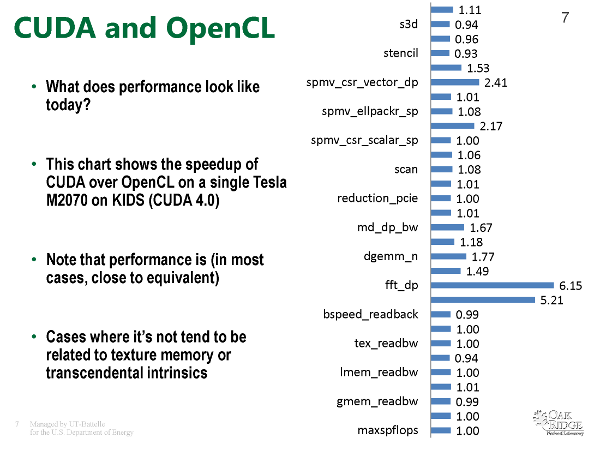

#OPENCL BENCHMARK DRIVERS#
Still, Intel needs to show it can optimize its drivers in time for major game launches (guaranteeing XeSS support in Modern Warfare II is a start ). There were no game crashes or blue screens of death during my testing. These aren't groundbreaking scores, but it was heartening to see affordable cards holding their own at higher resolutions.ĭespite a few hiccups, like not getting ray tracing in Control and occasional framerate hiccups in Cyberpunk, I was happy to see that Intel's Arc drivers didn't have any major issues. In Halo Infinite, I saw an average of 62 fps on the cheaper card with maxed graphics settings, while the A770 hit a smoother 70 fps.
#OPENCL BENCHMARK 1080P#
While the Arc A750 and A770 are best suited to 1440p and 1080p gaming, they also handled my ultrawide monitor's 3,440 by 1,440 resolution decently. Similar to AMD's FX Super Resolution (and unlike DLSS), Intel's upscaling tech can also work with competitor's GPUs to give everyone a framerate boost. You'll find XeSS support on titles like Call of Duty: Modern Warfare II, Naraka Bladepoint and Shadow of the Tomb Raider when the Arc GPUs launch. I didn't notice any artifacts during the Hitman benchmark, though I didn't have a chance to spend a ton of time playing it with XeSS enabled. Similar to DLSS on RTX GPUs, it uses AI processing to upscale images rendered at lower resolutions. NVIDIA's RTX 3060 Ti held a slight lead on both of Intel's cards in Hitman 3, though I was able to get a decent performance boost of 30 fps when I enabled Intel's XeSS technology. (Another sign: Control didn't think either card was compatible with DirectX 12 ray tracing.)

That's both a testament to Intel's graphics architecture, and a sign that its drivers may need some work. The pricier card also hit around 75 fps while playing Halo Infinite in 1440p, and they were both within a few thousand points of each other in the Luxmark HDR OpenCL benchmark. Still, it's strange to see the A750 and A770 scoring closely in some cases. Given how disappointing AMD's ray tracing performance has been, I was genuinely shocked that Intel was able to deliver a significantly better experience. Both GPUs scored close to the RTX 3060 Ti in 3DMark's Port Royal ray tracing benchmark, almost twice as fast as the Radeon 6600. It also proved to be a decent ray tracing contender (within reason), reaching 76 fps in Cyberpunk 2077's benchmark while playing in 1080p with the "ultra" ray tracing profile.

The Arc A770 was within reach of the RTX 3070 Ti's Time Spy Extreme score, a card that launched at $599 (and sold for much more) last year. That's not at all what I expected from a GPU under $300.

I was also able to hit 74 fps while playing Halo Infinite in 1440p with all of the graphics settings maxed out. The A750 scored over 900 more points than the 3060 Ti in the 3DMark Time Spy Extreme benchmark, landing just above the the RTX 3070. I figured the beefier Arc A770 would outmatch the RTX 3060 Ti (I didn't have a chance to review the 3060 at launch), but I was genuinely surprised by how well both cards faired in our benchmarks. (I typically saw them hit around 76C under heavy load, six degrees more than NVIDIA's card.) Both cards have a 225W TDP, which means they will end up drawing more power and heat than the 170W RTX 3060. The A770 doubles that memory and has more power across the board: 32 Xe cores and ray tracing units, as well as a 2.1 GHz speed. The Arc A750 features 28 Xe cores, 28 ray tracing units, a 2,050 MHz clock speed and 8GB of GDDR6 RAM. Powering these beauties is the latest evolution of Intel's "Alchemist" Xe graphics architecture. They're more like stealth bombers built with the express purpose of obliterating NVIDIA and AMD's price-performance ratios. These certainly don't feel like Intel's first consumer graphics cards. They're well-built, have a finger print-free matte finish, and aside from the modest LEDs around the A770's fans, there's no annoying bling in sight. After testing Intel's recent NUC Extreme systems, I was expecting some fairly practical-yet-dull gamer chic. I was impressed the moment I opened the Arc A750 and A770 boards sent for review.


 0 kommentar(er)
0 kommentar(er)
